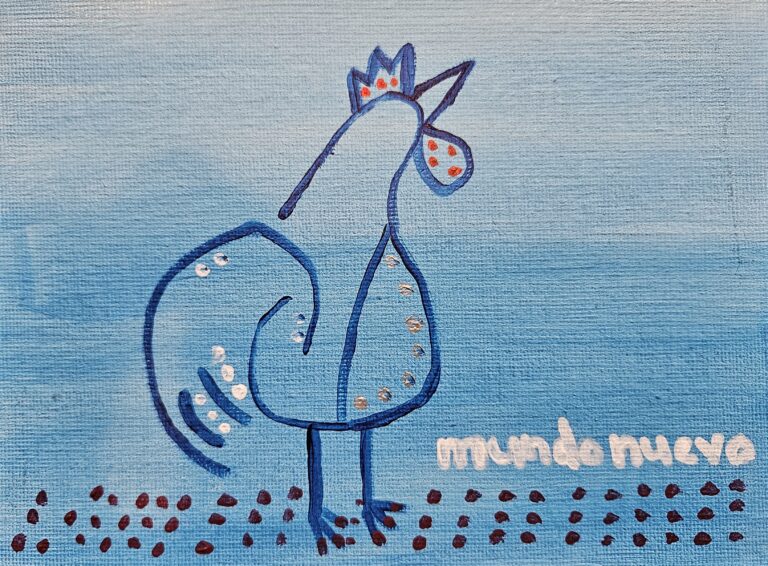Both the People’s National Movement and the United National Congress have posted photographs of children in the images of campaign engagements. Children in political media is not a problem in itself, some children in the media are children and relatives of candidates, children of prominent community political activists and also children whose parents explicitly authorised consent for the reproduction of their image in formal campaign publications. However, there is a common practice to “gather” children (and adolescents) for photographs in the community, three or four youth, sometimes holding up posters and party giveaways in hand, standing up as props in the background of a political campaign photograph.
Ethics on the production of minors in political media need to be a part of the wider conversation for future general and local government elections. While I do not have any empirical analysis to offer in this discussion, I have observed that there is a specific targeting of not only minors but also children and adolescents of working-class communities and African origin. Particularly, the young, black, male, in a vest and slippers,“on the block” has come to signify the image of “reach” and “impact” to the “at risk” and most “needy” people. Ironically, it is consistent neglect of this group and the reproduction of racist stereotypes of poor, dark-skinned, African descended people that put them up as a “political prize” to those who want to show they have “impact” or have to capacity to ground with “de real people.”
On August 6, 2020, a political advertisement “Trinity’s Triangle” was published on social media. The video portrays a couple in an argument when a socially displaced black woman approaches them asking for assistance. Chris, a young, dark skinned, black male, is portrayed to be angry and resolute in the position that he will not help or assist the woman since she could “do something better” than “be out here harassing people.” He also states that woman seeking assistance could possibly be a thief. After, a young, brown skinned, black male, Kamal, assists the women in need and hands over fruits and vegetables, which are conveniently all yellow, to her. The video closes, “Would Trinity fall for Bad Boy Chris or caring Kamal?” Bad Boy Chris is meant to represent Dr. Keith Christopher Rowley, the PNM political leader and Kamal is meant to represent Kamla Persad-Bissesar, the UNC political leader. Trinity is the mixed-race person that is a stand in for the conscience of the nation. The video attempts to portray “Bad Boy Chris” as scornful and dismissive of the struggles of another black woman, in spite of her vulnerabilities. It attempts to show the Rowley-led PNM as anti-social welfare and hostile to the interests of the poor. However, this is racialised and the brown skinned, Kamal, lighter in demeanour and complexion, delivers relief to the woman and provides an alternative image to the angry and unreasonable, dark skinned Chris. Notably, this may not be an official ad of the political party and therefore, the degree of responsibility of the UNC’s political campaign team is in question for the production of the ad. However, the video was shared by candidates and members of the party when it was launched.
I do think, however, that the “UNC Victory” advertisement was the more problematic advertisment. How could a video which highlights a racially diverse roster of candidates still reproduce racist subtext? The young girl who is the protagonist of the video is lost. Black people as an ethnic group are singly portrayed to be poor and destitute. Her natural hair is in a free style and she is wearing an oversized t-shirt. She falls to the floor and candidate David Nakhid lends her a helping hand. When the video closes, she is fully clothed with her hair combed, in the company of the UNC political leader, Kamla Persad-Bissessar.
These ads are specifically targeted to black youth in working-class and under-resourced urban communities. What they do in their targeting is create a narrow view of black life in those circumstances. It focuses singly on poor black people without an attempt to show how poverty and displacement shapes the life of other racial categories. The ads are cheap and they frame poor black people as a political commodity to compete for.
To critique this video, one does not have to say, “I was never poor. I was never hungry as a black person.” The reality is that there are many poor and hungry black people who are victims of social neglect and class inequalities. What we need are representations that are closer to life and not to our prejudices. This also demands that we move beyond the racist scorecard that counts what PNM does racist and what UNC does racist. To build a more racially just and equal society, we should be brave enough to speak up and call out what is wrong.
I am not certain how much the backlash against these advertisments in social media will change minds of voters but accepting a party platform and rejecting racist representations are not mutually exclusive.



Excellent. Thanks…